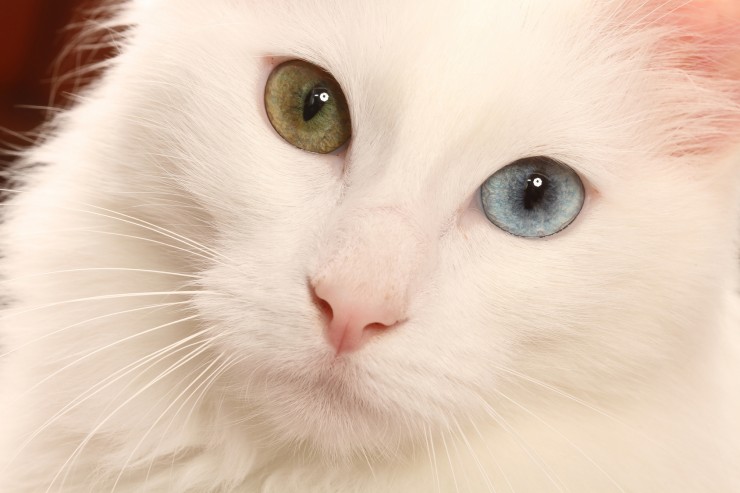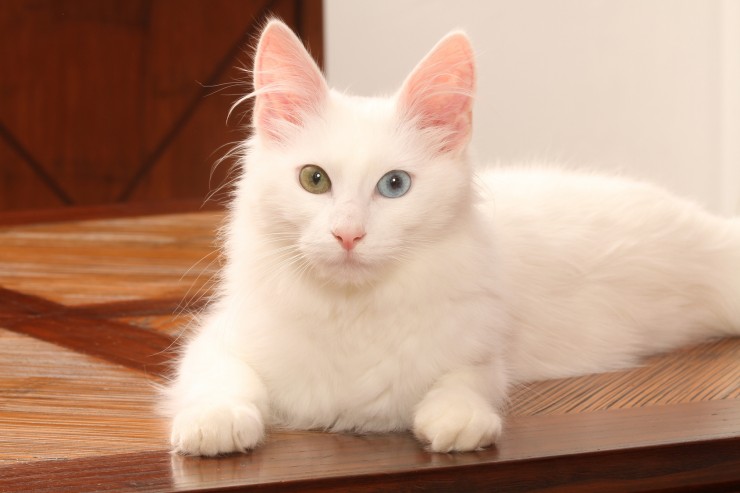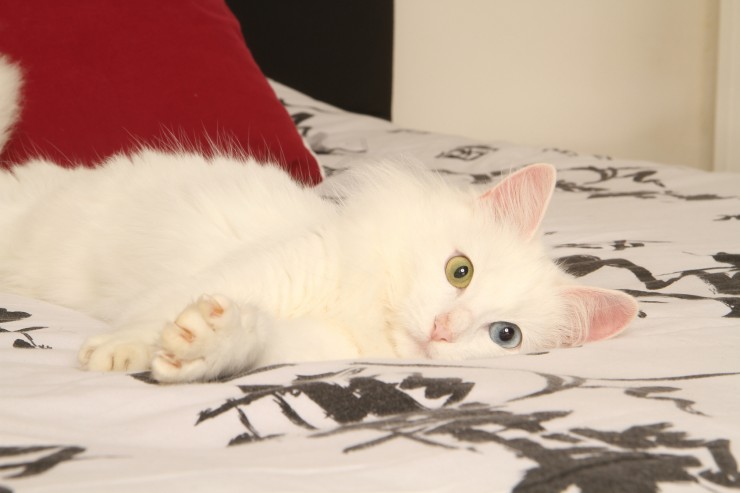



Odd-eyed cats are common enough that most cat lovers will have spotted or met one at least once, but they are not as common as your average moggy. Usually associated with a white-coloured coat and sometimes, accompanied by full or partial deafness, odd-eyed cats always have one blue eye, with the other eye being either brown, amber or green.
The odd-eyed appearance is one that occurs due to a phenomenon called complete heterochromia iridium, which can also cause other visible effects in cats too-and in this article, we will look at what this means in more detail, how odd-eyed cats occur, and how it can affect them. Read on to learn more.
As with everything else, odd-eyed cats come to exist due to a genetic anomaly, which “switches off” the expression of the gene that sends melanin to the eyes to produce their normal colour. All kittens are born blue-eyed, and will only develop their adult eye colour over time, and in odd-eyed kittens, the melanin needed to produce the ultimate eye colour fails to reach one eye, leaving them with one blue eye and one that develops into what their natural colour would otherwise have been.
There are two different genes that can lead to the odd-eyed appearance in cats-a dominant or epistatic white gene, which also leads to a white coat colour, by means of masking the expression of the genes that would otherwise lead to a different colour.
The other gene is called a white spotting gene, which leads to the odd-eyed appearance in cats that are not white coated. Generally, odd-eyed cats will have inherited both the dominant white gene and the white spotting gene, and it is rare for a cat that does not possess both to be born with odd coloured eyes.
In cats with odd eyes that are not white coated, such cats do not have an elevated propensity to deafness, and any cat of this type who is deaf as well will be down to pure coincidence or another route cause! However, deafness is widely associated with cats with both odd eyes and white coats, but many people mistakenly believe that all white, odd-eyed cats are also deaf, and this is not the case.
Up to seven out of ten odd-eyed cats actually have normal or almost normal hearing, while the remaining four or five are likely to be either deaf or hard of hearing in one ear, or in some cases, both.
Blue eyes in general lead to a slight increase in the likelihood of deafness in all cats, and additionally, the white coat gene also leads to a higher than normal incidence rate of cochlear degeneration, which leads to progressive deafness in kittens that are able to hear initially. However, in order for a white cat with blue or odd eyes to have an elevated predisposition to deafness at all, their coats must be pure white with not even a smudge of another colour-even a few strands of fur that are not white will greatly reduce the likelihood of potential deafness.
In coloured cats with odd eyes, the odd-eyed appearance is not likely to have any other effects on the cat at all, but the lack of melanin production that comes with the dominant white gene that also causes the white coat makes such cats more likely to be sensitive to the sun, and apt to burn in hot weather.
Owners of white cats should take special care to keep their cats in the shade and safe in hot, bright weather, and if necessary, use sunscreen on their exposed pink areas, as well as keeping a careful eye out for lumps, bumps, and any other anomalies that can be indicative of a developing melanoma, or skin cancer.
Theoretically, any kitten can potentially develop odd eyes when they become old enough to develop their true eye colour, and while “odd-eyed white” is also used in similar terms to breed description, it is not actually a breed in its own right-although due to the distinctive appearance it produces, such cats are often in demand as pets.
Breed lines that commonly produce a lot of white cats have a slightly higher occurrence rate of odd-eyed cats than most others, and the odd-eyed appearance rarely appears in dark haired cats, being particularly unusual in black cats.
Some of the breeds that most commonly produce odd-eyed cats that are either white or another colour include the Persian, the Turkish Van, and cats with Persian ancestry such as the Himalayan, but this is more due to selective breeding than a natural predisposition to the appearance as a breed-specific trait.
Copyright © 2005-2016 Pet Information All Rights Reserved
Contact us: www162date@outlook.com